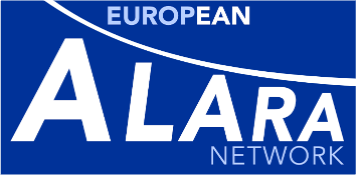The medical experts consulted have validated the justification of the use of healthy volunteers and the optimization of doses provided. However, a dose of 18 mSv appeared quite high, especially for persons not taking any personal benefit from their exposure.
Moreover, as the French legislation on biomedical research requires the sponsor to specify an exclusion period during which the healthy volunteers cannot participate in another study. This has raised the question of setting such a period for the exposure to ionising radiation, so that people do not accumulate doses regularly when participating in research.
In the French radiation protection legislation however, following from the transposition of Council Directive 97/43/Euratom [1], exposure for purposes of biomedical research of healthy volunteers, like all medical exposures, is not subject to the principle of limitation. Only the determination of a dose constraint is imposed (Article 4 (2) (b) of the Council Directive 97/43/Euratom). The concept of exclusion period does not exist.
The European and international recommendations (ICRP 62 [2], Radiation protection 99 Guidance on medical exposures in medical and biomedical research [3]) specify how to evaluate the justification, by definition of levels of societal benefit and associated risk categories (effective dose ranges). However, levels of benefit (minor, intermediate, moderate, substantial) can be quite difficult to estimate. Furthermore, the concept of exclusion period does not exist, although is recommended not to repeat exposure in the highest risk category.
To make the data more complete, the ERPAN network was asked to provide an overview of regulations and practices on the subject in the different member countries. Responses were supplied by Belgium, Germany, Ireland, Netherlands, Norway, Slovenia, Spain, Sweden, Switzerland and the United Kingdom.
Only Switzerland and Germany have established by regulation a dose limit for healthy volunteers. In Switzerland, the limit is 5 mSv and is associated with a 5 years exclusion period. Prior to inclusion in a trial, it is verified that the volunteer has not been exposed to ionizing radiation during the previous 5 years. In Germany, the dose limit is 20 mSv for volunteers for whom no personal medical benefit is expected from their exposure.
In other countries, according to the result of the ERPAN survey, the regulation addresses the provisions of the Council Directive 97/43/Euratom. United Kingdom has defined national guideline values of maximum dose constraint, set at 10 mSv. Ireland, Norway and Sweden apply the recommendations in ICRP 62 or in Radiation Protection 99.
Subsequently, the above mentioned research protocol was approved in France, after the trial sponsor added a specification in the protocol for a 5 years exclusion period for volunteers.
In order to improve radiation protection in biomedical research and harmonise practices in Europe, guidelines such as the ICRP 62 could be added to European and national legislations. They could be complemented by implementation of an exclusion period, which would prevent volunteers from accumulating exposure by participating in too many research studies involving exposure to radiation.
References
[1] Council of the European Union. Council Directive 97/43/Euratom of 30 June 1997 on health protection of individuals against the dangers of ionising radiation in relation to medical exposures. O.J. L-180, 22-27, 1997
[2] International Commission on Radiological Protection. Radiological Protection in Biomedical Research. ICRP Publication 62. Annals of ICRP. Oxford: Permagon Press, 1992.
[3] European commission. Radiation protection 99 Guidance on medical exposures in medical and biomedical research. 1998.
